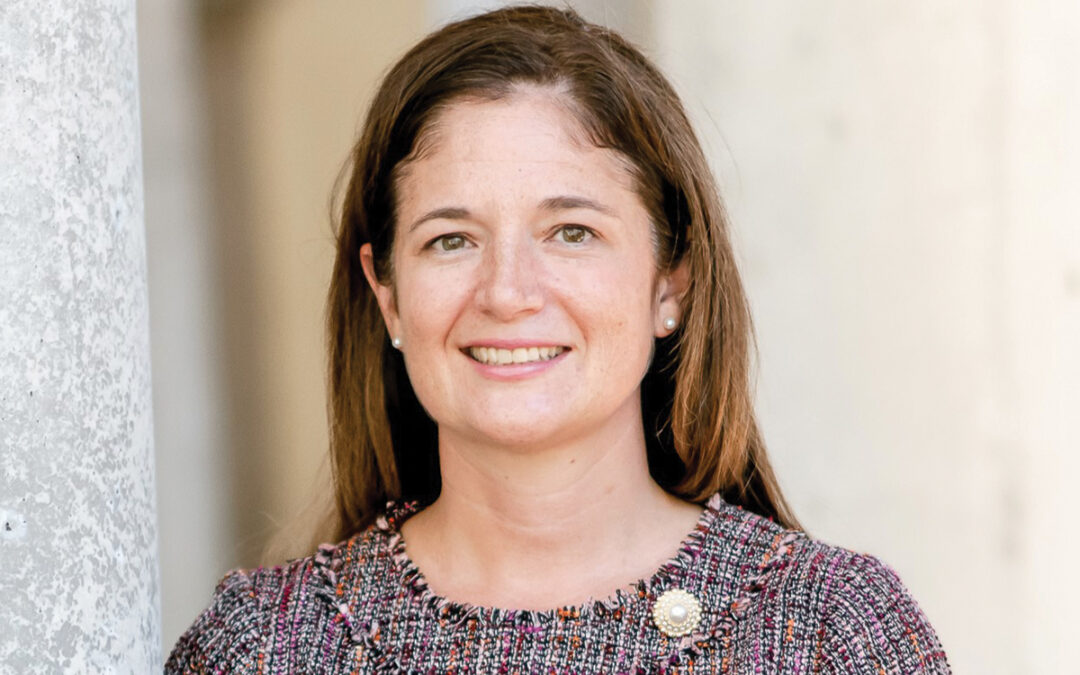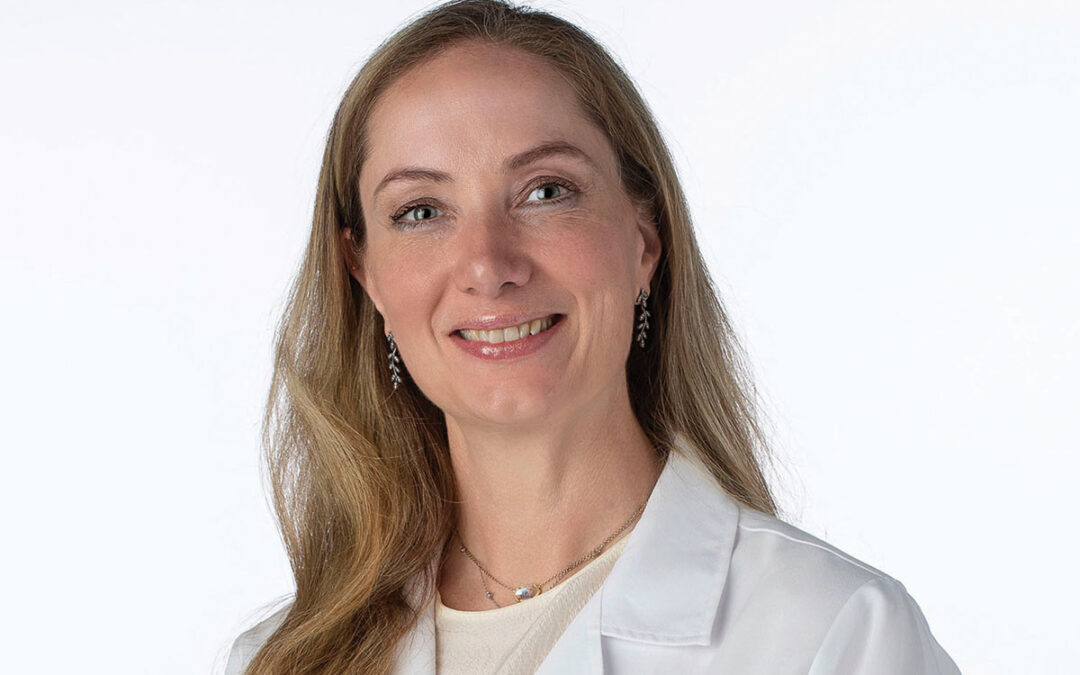Today, a woman in the U.S. has a one-in-eight chance of getting breast cancer in her lifetime. In fact, breast cancer is one of the two most common cancers in the world, according to the World Health Organization. With such a high occurrence of this type of cancer, ever-more sophisticated and strategic treatment methods are critical.
Because there are several different subtypes of breast cancer, effective treatment is most certainly not a one size- fits-all approach. Add to that, oncologists need to make treatment decisions based on a woman’s age, her general health, her menopausal status, her genetic history, and even her personal preferences.
For some women facing a Stage 1-to-3 breast cancer diagnosis, neoadjuvant chemotherapy (chemotherapy given before surgery) may be administered as the first line of treatment. This may shrink the tumor enough that a lumpectomy plus radiation becomes an option instead of a mastectomy.
“In certain cases, delivering chemotherapy early in the treatment process may even result in a woman being able to avoid radiation after her surgery,” said Amy Lang, M.D., F.A.C.P., Medical Oncologist at the START Center for Cancer Care. “In addition, by giving chemotherapy before surgery, we can target floater cells much earlier and much more effectively. It’s very exciting to see how effective this treatment can be.” (Floater cells are free-floating cancer cells that are cast off from tumors and circulate in the blood.)
What’s more, for a woman with a triple-negative breast cancer diagnosis whose cancer doesn’t completely go away with neoadjuvant chemotherapy, her oncologist may elect to treat her with a course of capecitabine, an anticancer drug.
“When a triple-negative breast cancer patient is given capecitabine for six months, in some cases, we can cure the cancer completely after surgery,” said Lang.
Targeted Therapies Offer Promising Treatment
Virginia Kaklamani, M.D., Professor of Medicine at the Mays Cancer Center, UT Health and the M.D. Anderson Cancer Center, noted that today’s oncologists have a number of new targeted therapies to treat breast cancer patients on an individualized basis. Targeted therapies are drugs tailored to the specific pathophysiology of different types of breast cancers.
“In just the past six months, we have seen four new drugs approved by the FDA for breast cancer treatment,” Kaklamani said. With HER2 positive breast cancer, these new drugs are very effective at killing breast cancer and also killing any cancer that has spread to the brain and other parts of the body.”
One of the most exciting developments in breast cancer treatment is the use of antibody drug conjugates. These biopharmaceutical drugs are designed as a targeted therapy for treating cancer. Unlike traditional chemotherapy, these drugs target and kill cancer cells while sparing healthy cells.
“We call these drugs ‘smart bombs.’ They release the toxin to kill only the cancer cells in the body,” said Kaklamani. “The increased use of antibody drug conjugates is substantially improving patient survival rates.”
Clinical Trials Offer Great Promise
Whereas participation in a clinical trial was once viewed as a last resort by many breast cancer patients, today, going into a clinical trial is a powerful option that can be used early in the treatment process.
“Today, clinical trials are one of the most important tools in our treatment protocols,” Kaklamani said. “Many of the drugs we are using today in successful breast cancer treatment are a direct result of clinical trials conducted in the past five years or less.”
Lang agreed about the importance of clinical trials in the early stages of treatment. “Many of the drugs used worldwide today were developed through clinical trials at START. We have seen great outcomes for so many women who go to a trial earlier, rather than later.”
New Advances in Treating Stage 4 Breast Cancer
Stage 4 breast cancer, or breast cancer that has metastasized to other parts of the body, is treatable, but not curable. “However, we have made enormous progress in just the past few years in Stage 4 treatments,” said Lang. “We have seen FDA approval of several powerful new drugs each year in the past three years. Effective drugs are getting to market quicker and this is immensely promising.”
Liquid Biopsies Yield Unique Benefits
Kaklamani points out that the relatively new liquid biopsy is proving to be a game-changer. A liquid biopsy is less invasive than a traditional biopsy and often can provide a better understanding of the cancer as a whole. “The liquid biopsy we can do today is a ground-breaking development. With this, we can now measure a circulating tumor’s DNA and conduct a genome analysis.”
Both Lang and Kaklamani stress the importance of a woman selecting an outstanding medical team for her breast cancer treatment.
“Cancer treatment is a team approach,” said Lang. “You need to feel confident that you have talented medical professionals who specialize in breast cancer on your team. In addition, you need to do some thorough research on your own and develop a good set of questions to ask your treatment team. Learn everything you can about the treatment options for your specific type of cancer. You need to be your own best advocate in your treatment journey.”
Breast Cancer Glossary of Terms
Today, researchers are focused on three subtypes of breast cancer to better understand the biology of the disease and ultimately, how to best treat each case.
Hormone receptor-positive: Hormone receptor-positive breast cancers test positive for estrogen and/or progesterone receptors. Breast cancer cells that have estrogen receptors are called estrogen receptor (ER)-positive, and those with progesterone receptors are called progesterone receptor (PR)-positive. Collectively, this is the most common breast cancer subtype, accounting for roughly 65 percent of all breast cancer diagnoses. If your tumor is hormone receptorpositive, your treatment may include specific medications which block hormone signaling or reduce your body’s natural estrogen production, such as tamoxifen or aromatase inhibitors. If your tumor cells do not have receptors for either hormone, it is called hormone receptor-negative.
HER2-positive (Human epidermal growth factor receptor 2 positive): HER2-positive breast cancers can test positive for HER2 either by having excessive amounts of the HER2 receptor on the surface of the cancer cell, or too many copies of the HER2 gene inside the cancer cell. The HER2-positive subtype is found in about 20 percent of all breast cancer patients. It can also be either hormone receptor-negative or hormone receptor-positive. Treatment for HER2-positive breast cancer may include drugs targeting HER2, such as Herceptin (trastuzumab), Perjeta (pertuzumab), or Kadcyla (TDM1).
Triple-negative breast cancer: Triple-negative breast cancer, which lacks ER and PR receptors and is HER2-negative, is the least common of these three subtypes. It accounts for about 15 percent of cases of breast cancer. Triple-negative breast cancer may be a more aggressive form of cancer. In patients with early-stage disease, chemotherapy is often recommended for treatment.
—Source: Dana-Farber Cancer Institute
BY: BLITHE WILEY










0 Comments